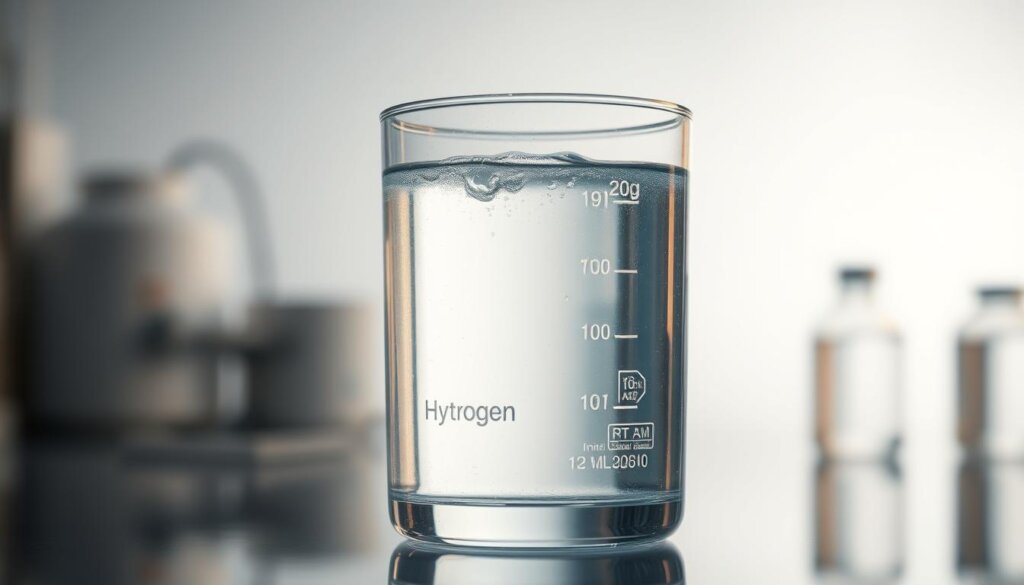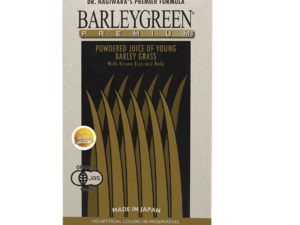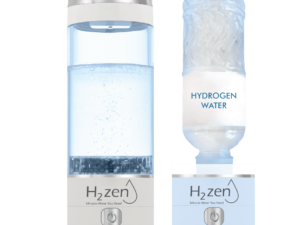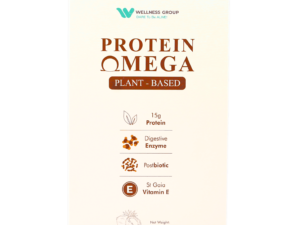Surprising fact: small human trials report measurable gains — improved oxygen saturation or better imaging — in many participants after weeks of high-concentration hydrogen therapy.
This article reviews what current human studies suggest about using hydrogen-rich water to support respiratory health. It summarizes signals from small trials in COPD, asthma, post-tuberculosis fibrosis, and early interstitial disease.
The evidence so far shows promising signals: some patients saw higher oxygen levels, lower oxidative stress markers, and imaging or physiology gains versus standard care in selected trials. Results are encouraging but come from limited samples and short follow-up.
Wellness Group in Malaysia follows this research closely to guide safe, practical use. They stress that any new approach should complement prescribed care. Readers can reach Wellness Group via WhatsApp at +60123822655. Business hours: Mon–Fri 9:30 am–6:30 pm; Sat–Sun 10 am–5 pm.
Key Takeaways
- Early human studies show signs of benefit in some patients with chronic respiratory disease.
- Typical trial approaches used drinking hydrogen-rich water or inhalation as adjunct therapy.
- Safety in studies was acceptable; side effects were usually mild and transient.
- Larger, blinded trials are needed before making firm clinical claims.
- Wellness Group offers Malaysia-based guidance and easy contact via WhatsApp.
- Any use should complement, not replace, prescribed respiratory treatments.
Understanding Hydrogen Water and Lung Health in Malaysia
Before looking at trials, readers should know what an infused H2 drink actually is and why it attracted clinical interest. Hydrogen-rich water is plain drinking water with dissolved molecular hydrogen gas added as H2, distinct from the hydrogen already bound within H2O.
What hydrogen-rich water is and how it differs
Because molecular hydrogen is extremely small and neutral, it diffuses rapidly and reaches tissues across the body. That rapid spread underpins interest in delivery to the respiratory system.
Why oxidative stress and inflammation matter
Chronic respiratory diseases like COPD and asthma involve ongoing oxidative stress and inflammation. Pollutants, smoke, and infections raise reactive oxygen species and damage tissue.
“By targeting the most damaging free radicals while sparing normal signaling oxidants, molecular hydrogen may help rebalance redox pathways,”
Malaysian patients who want local guidance can contact Wellness Group on WhatsApp at +60123822655. Business hours: Mon–Fri 9:30 am–6:30 pm; Sat–Sun 10 am–5 pm.
Is hydrogen water good for lungs?
Small trials and pilot studies have sparked interest by showing objective benefits in some respiratory patients. The short answer: promising but not definitive.
Short answer at present: promising but not definitive
What the studies shown so far include a 10-patient observational series where 7 of 10 patients raised SpO2 after four weeks of high-concentration HRW and showed lower TBARS, MDA, and diene conjugates.
In an early randomized trial of mild interstitial disease, hydrogen-rich water outperformed N-acetylcysteine on HRCT improvement rate, reduced CPI, and improved DLCO-sb over 48 weeks with a similar safety profile.
How Wellness Group interprets the current evidence
Wellness Group views these results as a signal to consider HRW as a complementary therapy, not a replacement for prescribed care.
“Patients with early disease or rehabilitation needs may notice better stamina or easier breathing; those with advanced fibrosis are less likely to see major gains.”
Practical notes: selection, dosing consistency, and clinician alignment matter. Medication interactions and disease complexity require monitoring.
- Some patients improved oxygenation and tolerance; results need larger blinded trials.
- Positive trials used higher concentrations and steady intake.
- For individualized advice, Wellness Group can be reached via WhatsApp at +60123822655 (Mon–Fri 9:30 am–6:30 pm; Sat–Sun 10 am–5 pm).
- Read more in their hydrogen water cleansing guide.
| Study type | Key outcome | Patients | Safety |
|---|---|---|---|
| 10-patient observational | 7/10 ↑ SpO2; ↓ TBARS, MDA | COPD, asthma, post-TB fibrosis | Mild, transient events |
| 48-week randomized | Better HRCT rate; ↓ CPI; ↑ DLCO-sb vs NAC | Early-stage ILD patients | Comparable to NAC |
| Overall summary | Promising signals; not definitive | Small, selective samples | Acceptable in trials |
How molecular hydrogen works in the body
To judge therapeutic potential, it helps to trace how this tiny molecule interacts with damaging oxidants.
Targeting reactive oxygen species and hydroxyl radicals
Molecular hydrogen acts selectively on the most cytotoxic oxygen species, chiefly hydroxyl radicals. These radicals damage lipids, proteins, and DNA in lung tissue and other organs.
Research shows reduction of hydroxyl radicals and, to a lesser extent, peroxynitrite at physiologically relevant concentrations (25–400 µM in lab models). That action helps explain improvements in oxidative stress biomarkers reported in small human studies.
Selectivity: sparing useful signaling oxidants
Importantly, this small gas does not react meaningfully with hydrogen peroxide, superoxide, or nitric oxide. That selectivity preserves signaling pathways tied to immunity and vascular tone.
“Selective reduction of the most harmful radicals may avoid over-suppressing normal redox signalling.”
Penetration into cells and mitochondria as a therapeutic antioxidant
Being tiny and nonpolar, the molecules diffuse across membranes and enter mitochondria where many radicals form. Reaching that source allows modulation of oxidative injury before it triggers inflammation and remodeling.
- Targets hydroxyl radicals that drive cellular damage.
- Spares signaling oxidants so immune and vascular function remain intact.
- Diffuses into cells and mitochondria to act near radical production sites.
What studies say about hydrogen-rich water for chronic lung conditions
Small clinical reports have measured short-term shifts in SpO2 and stress markers after giving concentrated HRW to people with chronic respiratory conditions.
Pilot data: HRW and oxygen saturation in COPD, asthma, post-TB fibrosis
A single observational pilot enrolled ten patients (COPD n=7, asthma n=2, post-TB fibrosis n=1) with baseline SpO2 between 90–95%.
They consumed high-concentration hydrogen-rich water prepared from tablets (>5 mM; ~8 mM per 250 mL), totaling >10 mmol H2/day for four weeks.
Seven of ten showed measurable rises in oxygen after dosing and across repeat checks, while three did not respond.

Observed effects on oxidative stress markers
Biochemical testing showed clear declines in oxidative stress markers. TBARS fell 2.6 → 2.1 µg/mL (p=0.0001). MDA dropped 3.2 → 2.7 µg/mL (p=0.0004).
Diene conjugates moved from 27.3 → 25.9 (p=0.0005). At the same time, circulating vitamins E and C and nitrite rose.
Exercise tolerance and hypoxia improvements reported
Several patients noted better exercise tolerance and delayed need for supplemental oxygen. Those changes matched the biomarker and oxygen shifts in many cases.
Key caveats: this was an observational study with a small sample and unusually high dosing. Results are encouraging but need confirmation in randomized, blinded trials.
“Seven of ten participants improved SpO2 after a four-week high-dose regimen, with parallel declines in markers of oxidative damage.”
- Majority showed near-term oxygen rises after drinking concentrated HRW.
- Significant reductions in TBARS, MDA, and diene conjugates were recorded.
- Some patients reported better daily stamina and delayed oxygen therapy.
- A minority did not respond, underscoring individual variability in disease biology.
| Feature | Value | Clinical note | Statistical change |
|---|---|---|---|
| Participants | COPD 7; asthma 2; post-TB fibrosis 1 | Baseline SpO2 90–95% | 7/10 improved SpO2 |
| Dosing | >10 mmol H2/day (~8 mM/250 mL) | Tablets dissolved, taken immediately | High-concentration regimen |
| Biomarkers | TBARS, MDA, diene conjugates | Vitamins E & C and nitrite increased | TBARS 2.6→2.1; MDA 3.2→2.7; diene 27.3→25.9 (p≤0.0005) |
Hydrogen therapy for interstitial lung disease: insights from a randomized trial
A randomized trial provided stronger clinical data on a dissolved-gas regimen versus a standard antioxidant in early interstitial lung disease.
The prospective single-center trial randomized 87 patients (ITT) with early ILD to receive either twice-daily 350 mL at 1.6 ppm hydrogen-rich water or NAC 600 mg TID for 48 weeks.
Hydrogen water versus N-acetylcysteine: HRCT improvement and CPI reduction
Imaging outcomes favored the gas-enriched arm. HRCT improvement in the intent-to-treat set was 63.6% versus 39.5% in the control group.
Per-protocol analysis reached significance (P=0.008). The composite physiologic index fell more in the hydrogen therapy group (FAS and PPS, P<0.05 and P<0.01), suggesting better short-term disease modulation.
DLCO-sb gains and what they mean for gas exchange
DLCO-sb improved significantly with the dissolved-gas regimen (FAS P<0.01; PPS P<0.001). That metric measures diffusion function and predicts exercise tolerance and prognosis.
Other spirometric measures (FVC, FEV1, FEV1/FVC%, TLC) did not differ, a common pattern when diffusion improves before volume metrics shift.
Safety profile compared with NAC over 48 weeks
Adverse events were mostly mild to moderate: 15.9% in the hydrogen group versus 23.3% with NAC. No deaths occurred.
Practical takeaway: the trial strengthens the evidence that hydrogen therapy may aid gas exchange and imaging in early disease while remaining well tolerated. Limitations include single-center design and lack of blinding.
“These results suggest a plausible complementary role for this therapy in earlier disease windows,”
Hydrogen inhalation vs hydrogen water: delivery methods for respiratory support
Delivery choices change how much active gas reaches the airway and bloodstream.
Bioavailability, dose control, and clinical contexts
Inhalation sends the gas directly to airways and gives rapid bloodstream access. Controlled sessions (for example, ~2.4% for 45 minutes) have shown reduced airway inflammation in small COPD and asthma groups.
Drinking provides lower, variable peaks. Clinical trials used 1.6 ppm twice daily in ILD or tablet methods that produced ~8 mM peaks. Those regimens showed imaging and diffusion gains in early disease.
When inhalation may be favored and when water may be sufficient
Inhalation suits supervised care when steady concentrations and tight control matter. Devices require quality checks and safe limits to avoid device hazards.
Hydrogen water suits everyday use. It is portable, low-cost, and handy for maintenance or trialing response over weeks.
“Route of delivery shapes exposure and clinical utility; both paths can be complementary in practice.”
| Route | Typical exposure | Practical note |
|---|---|---|
| Inhalation | ~2.4% for 45 min (clinical use) | Precise control; device needed; supervised use |
| Hydrogen water | 1.6 ppm twice daily or high‑peak tablets | Portable; variable dose; easy daily habit |
| Choice | Depends on goals and severity | Wellness Group can advise tailored plans |
- Patients with acute stress or systemic targets may prefer inhalation under guidance.
- Those seeking accessible maintenance often start with water and reassess.
Safety, side effects, and who should use caution
Safety data from trials and user reports help set realistic expectations before trying a supplemental dissolved-gas regimen. Overall, human studies show a favorable record, with most events mild and transient.
General safety record
Clinical trials reported low rates of adverse events. In the ILD randomized trial, adverse events were 15.9% with the gas arm versus 23.3% with NAC, and no deaths occurred.
Common mild effects
Some patients notice temporary digestive changes such as bloating, nausea, or loose stools. Others report brief lightheadedness or fatigue that usually fades with continued use.
“Across studies, the safety profile was excellent and side effects were generally mild.”
Medication and chronic disease considerations
Theoretical interactions may exist with treatments that modify oxidative pathways. Those on complex regimens or with unstable cardiopulmonary diseases should consult clinicians first.
| Area | Notes | Action |
|---|---|---|
| blood | No major trends; monitor if on anticoagulants | Check labs if concerned |
| blood pressure | Generally stable in trials | Monitor home readings in hypertensive patients |
| Pregnancy & severe disease | Data limited; caution advised | Seek personalised medical advice |
Practical tips: start low, use reputable products, and track symptoms, sleep, and exercise tolerance. For medication reviews or safety questions, contact Wellness Group via WhatsApp at +60123822655 (Mon–Fri 9:30 am–6:30 pm; Sat–Sun 10 am–5 pm).
Practical guidance: how people use hydrogen-rich water day to day
Practical routines help patients judge whether a dissolved-gas approach fits their goals. Small, repeatable habits also make it easier to track subtle shifts in breathing, stamina, or sleep.

Typical concentrations, timing, and consistency
Two common protocols appear in trials: a ready-made 1.6 ppm option taken twice daily, or tablet-prepared cups that reach ~8 mM peaks and are consumed immediately after dissolution.
Consistency matters: studies that reported benefit used daily intake for weeks to months rather than sporadic use. Many people take doses in the morning and early afternoon to watch daytime effects and avoid nighttime digestive sensitivity.
Setting realistic expectations for symptoms and performance
A 4–8 week personal trial with simple symptom and activity logs can reveal changes in walking tolerance, ease of breathing, or sleep. Some notice subtle shifts early; others need objective tests such as SpO2 or DLCO to confirm trends.
“Start low, track results, and coordinate with clinicians if medical conditions or fluid limits apply.”
For product selection and personalized dosing in Malaysia, message Wellness Group on WhatsApp at +60123822655 (Mon–Fri 9:30 am–6:30 pm; Sat–Sun 10 am–5 pm).
Who might benefit most from hydrogen support for lungs
Clinical signals point to specific populations who are more likely to respond to low-risk antioxidant support aimed at the respiratory system.
Individuals with oxidative stress-related lung conditions
Patients with COPD, asthma, and early fibrotic changes often carry high levels of oxidative stress and inflammation. Small trials reported improved oxygen metrics and reduced oxidative markers in some of these patients.
Active adults and older populations
Active adults who want to preserve exercise tolerance may use a monitored adjunct to support day-to-day function. Older people, who often face higher oxidative burdens and multiple medicines, may welcome a gentle, well-tolerated option.
- Early-stage ILD showed imaging and diffusion gains in one randomized trial.
- Those recovering from infection or with workplace pollutant exposure may see rehabilitation benefits.
- Nonresponders occur; a short, tracked trial helps decide continuation.
- Combining hydrogen therapy with prescribed bronchodilators, inhaled steroids, and rehab maximizes potential effects.
“Hydrogen support appears most useful as a complementary tool, not a replacement for standard care.”
Limitations of current evidence and research gaps
Available trials suggest possible benefit but leave important questions about scale and consistency. The present body of work is useful as a starting point, not as definitive guidance.
Small samples, varied patients, and short follow-up
Many published studies shown so far are small. A 10-patient observational series and one single-center randomized trial inform most claims.
Those designs can overestimate effects and do not capture long-term durability. Disease heterogeneity — COPD, asthma, and various ILDs — also limits generalizability across patient groups.
Design and control limitations to address
Blinding and control groups matter. Placebo or sham comparators reduce bias and separate true treatment effects from placebo responses.
“Rigorous, multicenter, blinded trials will clarify whether early signals hold up in diverse populations.”
- Standardize dosing and concentration checks so studies are comparable.
- Use objective endpoints such as DLCO-sb and CPI alongside clinical outcomes.
- Study longer follow-up to measure exacerbation rates and sustained benefit.
- Expand to post-infection fibrosis and long COVID respiratory syndromes as priority areas.
| Gap | Why it matters | Suggested study feature |
|---|---|---|
| Sample size | Small cohorts limit statistical power | Large, multicenter RCTs |
| Heterogeneous diseases | Different pathophysiology may alter response | Stratified arms for COPD, asthma, ILD, post-infection |
| Lack of blinding | Risk of bias and placebo effects | Double-blind, placebo-controlled design |
| Short follow-up | Unclear durability and long-term safety | 12–24 month outcome assessment |
Wellness Group continues to monitor emerging research and will update guidance as higher-quality evidence appears. Patients in Malaysia should consult clinicians before changing therapies.
Contact Wellness Group Malaysia for guidance
Wellness Group offers concise, practical support to help people evaluate adjunct respiratory options and translate study findings into safe routines. The team focuses on personal goals, current medications, and measurable outcomes.
WhatsApp: +60123822655
Malaysians can message the group on WhatsApp for quick answers and to book in-person or virtual consultations during business hours.
Business hours
Monday–Friday: 9:30 am–6:30 pm. Saturday–Sunday: 10 am–5 pm.
How the team supports personalized respiratory wellness plans
The clinical team reviews each patient’s respiratory history, current prescriptions, and rehab goals to decide whether hydrogen therapy or another path fits safely.
They advise on product quality, concentration targets, and timing strategies that align with published protocols. Templates help patients track symptoms, exertional tolerance, and objective measures such as pulse oximetry or DLCO.
Coordination with primary physicians or pulmonologists is encouraged so care stays consistent. Follow-ups refine the plan based on results and tolerability.
Readers who want practical guidance or a clear summary of the evolving evidence can also read a related guide at hydrogen water detox.
Conclusion
,Taken together, small clinical trials and pilot reports show cautious but real signals that adjunct dissolved-gas approaches can aid oxygenation and reduce oxidative stress in some patients.
Observed results include improved oxygen saturation, lower oxidative biomarkers, and better diffusion measures in select groups. Safety was generally favorable and side effects were mild.
Delivery choice—drinking prepared hydrogen water versus supervised inhalation—depends on goals and access. These approaches should complement, not replace, standard respiratory care and rehabilitation.
For Malaysians who want personalised advice, contact Wellness Group on WhatsApp at +60123822655 (Mon–Fri 9:30 am–6:30 pm; Sat–Sun 10 am–5 pm). Larger blinded studies will clarify who benefits most and refine protocols.
FAQ
What is hydrogen-rich water and how does it differ from regular water?
Hydrogen-rich water contains dissolved molecular hydrogen gas (H2) at higher concentrations than regular tap or bottled water. It looks and tastes the same but is produced by infusing H2 gas, using tablets that release gas, or electrolysis devices. The extra H2 acts as a potential therapeutic antioxidant rather than changing basic water chemistry.
Why do oxidative stress and inflammation matter for respiratory health?
Lungs face constant exposure to pollutants, infections, and immune reactions. These triggers generate reactive oxygen species and free radicals that damage cells, worsen inflammation, and impair gas exchange. Reducing oxidative damage can help preserve lung tissue, lower chronic inflammation, and support breathing function.
Is hydrogen-rich water effective for improving lung function?
Current evidence is promising but not definitive. Small clinical studies and pilot trials report improvements in oxygen saturation, exercise tolerance, and reductions in oxidative stress markers in conditions such as COPD, asthma, and post‑infectious scarring. However, larger randomized trials are needed to confirm routine clinical benefit.
How does molecular hydrogen act inside the body?
Molecular hydrogen appears to selectively neutralize highly reactive species like hydroxyl radicals while sparing important signaling reactive oxygen species. It penetrates cell membranes and mitochondria, where it may reduce oxidative damage and modulate inflammatory signaling without broadly suppressing normal redox biology.
What specific laboratory changes have studies observed after using hydrogen-rich water?
Trials have reported reductions in oxidative stress markers such as TBARS, malondialdehyde (MDA), and conjugated dienes in blood. Some work also notes improved antioxidant enzyme activity and lower systemic inflammation markers, consistent with reduced cellular oxidative burden.
Are there controlled trials for interstitial lung disease comparing hydrogen water to standard therapies?
A randomized trial compared hydrogen-administered therapy with N‑acetylcysteine and found improvements in high‑resolution CT scores and composite physiologic index in the hydrogen group, alongside modest DLCO gains. Safety over 48 weeks was comparable, but replication in larger cohorts is required.
How does inhaled hydrogen gas compare with drinking hydrogen-rich water?
Inhalation offers tighter dose control and faster systemic delivery, which may suit acute respiratory distress or hospital settings. Drinking hydrogen-rich water is more convenient for daily use, with lower peak concentrations but easier long-term adherence. Choice depends on clinical context and goals.
Is hydrogen-rich water safe and are there side effects?
It has a strong safety record in published studies. Most people tolerate it well. Occasional mild effects reported include transient digestive discomfort, bloating, or lightheadedness. Serious adverse events are rare, but people on complex drug regimens or with unstable chronic disease should consult a clinician first.
How do people typically use hydrogen-rich water day to day?
Common practice involves drinking hydrogen-rich water once or twice daily at manufacturer-recommended concentrations. Consistency matters: many reported benefits come from regular use over weeks to months. Users set realistic expectations and combine it with standard medical care and lifestyle measures.
Who is most likely to benefit from hydrogen support for respiratory health?
Adults with oxidative stress–related lung conditions—such as COPD, chronic asthma, or post‑infectious fibrosis—may gain the most. Active older adults concerned about declining respiratory capacity also report subjective and objective improvements. Individual responses vary, so personalized guidance helps.
What are the main limitations in the current research?
Studies to date often have small sample sizes, varied patient populations, different delivery methods, and short follow‑up. Heterogeneity makes pooled conclusions difficult. Well‑designed, blinded, larger randomized trials in COPD, asthma, ILD, and post‑infection cohorts are still needed.
Should anyone avoid using hydrogen-rich water?
Most people can try it safely, but those with unstable medical conditions, complex medication regimens, or pregnancy should consult a healthcare professional first. Clinicians in Wellness Group Malaysia can advise on interactions, dosing, and monitoring for people with chronic disease.
How can someone contact Wellness Group Malaysia for personalized advice?
Wellness Group Malaysia offers guidance via WhatsApp at +60123822655. Their business hours are Monday–Friday 9:30 am–6:30 pm and Saturday–Sunday 10:00 am–5:00 pm. They support tailored respiratory wellness plans combining lifestyle, monitoring, and adjunctive options.






